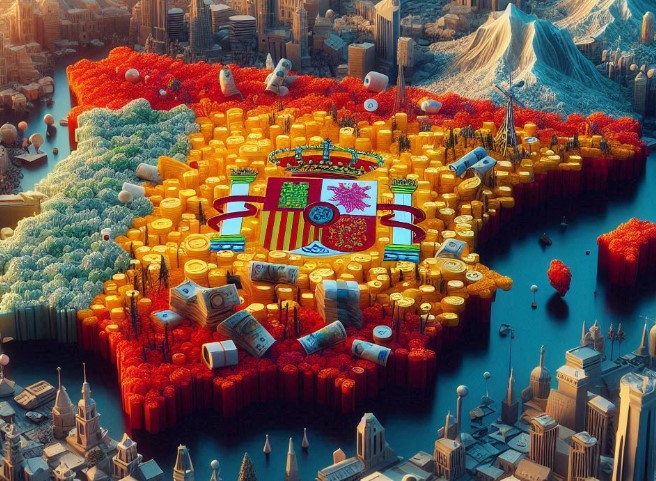Spain, like many other nations, faces the challenge of unequal wealth distribution, where a small segment of the population controls the majority of the national riches. While the national distribution was broadly understood, detailed regional analyses have been lacking until now. A recent study by EsadeEcPol closes this gap, providing the first comprehensive “x-ray” of wealth at the autonomous community level. The findings are insightful and reveal significant disparities.
Madrid at the Top: The Capital as a Center of Riches
The study reveals that residents of Madrid are the wealthiest citizens in Spain, with an average net wealth of an impressive 686,988 Euros. This figure is more than three times higher than the wealth of residents in Extremadura, who possess an average of just 228,869 Euros. This stark inequality between the north and south of the country is a central finding of the investigation.
All autonomous communities whose average wealth exceeds the national average of 382,828 Euros are located in the northern half of Spain. Second only to Madrid are the Balearic Islands with 477,048 Euros, followed by Catalonia (433,628 Euros), Cantabria (404,045 Euros), Aragon (401,409 Euros), and La Rioja (399,723 Euros). Below the Spanish average are regions such as Castile and León (344,636 Euros), Galicia (325,063 Euros), the Valencian Community (314,461 Euros), Asturias (306,818 Euros), Murcia (297,198 Euros), Castile-La Mancha (285,259 Euros), the Canary Islands (261,370 Euros), Andalusia (258,378 Euros), and finally Extremadura (228,869 Euros).
Inequality Behind the Averages: An Elite Owns Most
The high average values can be misleading, as they reflect the profound inequalities in wealth distribution. A small elite controls the majority of the riches. At the national level, for example, 10% of Spanish citizens hold 60% of the total wealth recorded in the country. If the population were divided into two exact halves, the wealthiest half would accumulate 93% of all wealth, while the poorer half would own barely 7%.
These inequalities are present in all autonomous communities, though to varying degrees. A trend emerges: the more wealth a territory accumulates, the more unequal the distribution. The case of Madrid is a prime example. As the community with the highest average wealth per inhabitant, it is also the region where the wealthiest 1% owns the largest share of wealth. One out of every three Euros of wealth accumulated in the capital belongs to this “super-elite.” The areas where the wealthiest 10% control the highest percentage of regional wealth are Madrid (63%), followed by the Balearic Islands and Canary Islands (62% each), and Catalonia (60%). Behind them are Galicia (57%), the Valencian Community (57%), La Rioja (55%), Murcia (54%), Andalusia, Cantabria, and Aragon (52% each), Asturias (50%), Extremadura (49%), Castile and León (48%), and Castile-La Mancha (47%).
The Significance of Wealth and Its Composition
The issue of wealth and its unequal distribution is one of the most defining economic and social questions of our time. The report’s authors emphasize the far-reaching implications of these strong inequalities, which are even more pronounced than those in income distribution. Wealth determines long-term spending and investment capacity and significantly influences economic opportunities. The pioneering study is based on tax data from one million households between 2016 and 2022, encompassing 2.9 million people. Information from the Basque Country and Navarre is not included due to their independent tax systems.
A significant component of Spanish private wealth is real estate. 52% of the total private wealth in the country is tied up in real estate, with primary residences alone accounting for 30% of total wealth. Other important assets include current accounts (16%), business assets (11%), stocks (11%), pension and life insurance (5%), and investment funds (5%). The type of wealth held also varies depending on one’s position in the wealth pyramid. For the poorest 20%, current accounts are the most common asset, making up around 63% of this group’s total wealth. Moving to the middle wealth brackets, real estate appears to be the main source of wealth, accounting for 70%. When focusing on the elites who accumulate the majority of the country’s wealth, investment products (apartments as investments, funds, stocks…) gain weight. This goes so far that the wealthiest 1% of the country distributes most of its wealth in business assets, stocks, and investment funds.




